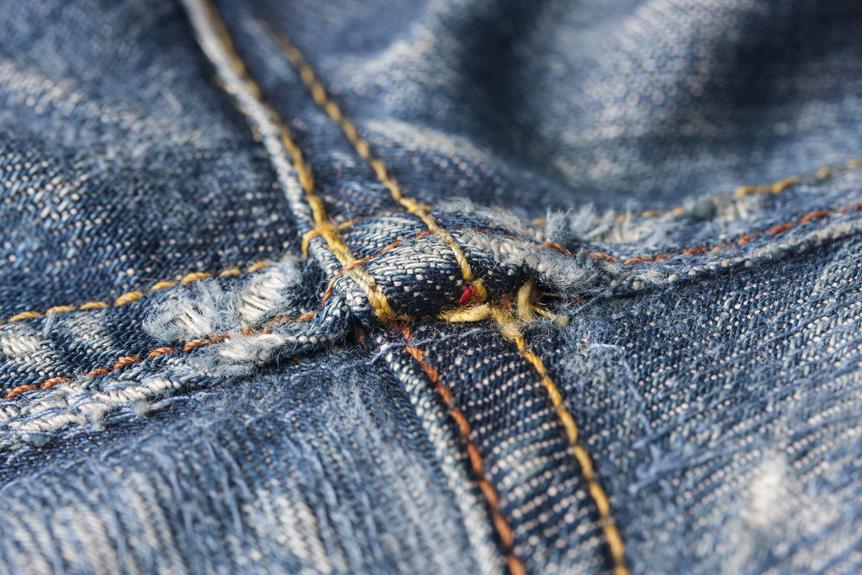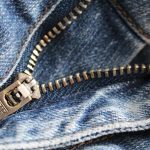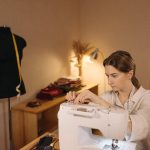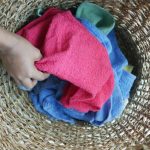You might think all sewing stitches are the same, but mastering the 5 essential seam stitch types for fabrics can take your sewing projects to the next level. Understanding and utilizing straight stitch, zigzag stitch, overlock stitch, French seam, and flat-felled seam will give your creations a professional, polished finish.
Each stitch type serves a specific purpose, from securing seams to preventing fraying, and mastering them will elevate the quality and durability of your sewing projects.
Let's dive into the essential seam stitch types that every sewing enthusiast should know to achieve mastery in their craft.
Key Takeaways
- Straight stitch is commonly used for securing seams and creating clean lines. Proper fabric tension is important for a neat and professional-looking seam.
- Zigzag stitch is versatile and ideal for sewing stretchy fabrics. Adjusting thread tension, stitch width, and length allows for customization of appearance and functionality.
- Overlock stitch achieved with overlock machines or sergers creates professional and secure seams while preventing fraying. It neatly encases raw edges, making it essential for professional-looking garments.
- French seam is suitable for lightweight and sheer fabrics. It creates a professional and secure seam by stitching a narrow seam with wrong sides together and folding fabric to encase the raw edge.
Straight Stitch
The straight stitch is a simple and versatile sewing technique that's commonly used for securing seams and creating clean, straight lines in your fabric projects. When using a sewing machine for a straight stitch, it's crucial to ensure that the fabric tension is appropriately set. Proper fabric tension prevents the thread from bunching or looping on the fabric, creating a neat and professional-looking seam.
To achieve the ideal straight stitch, start by selecting the straight stitch setting on your sewing machine. Next, adjust the fabric tension using the tension dial or digital settings according to the type of fabric you're working with. For lighter fabrics, you may need to decrease the tension, while heavier fabrics might require increased tension.
Once you have set the fabric tension, test the stitch on a scrap piece of fabric to ensure that the stitches are lying flat and the fabric isn't puckering. If adjustments are needed, make small changes to the tension settings until the stitch appears even and balanced.
Mastering the straight stitch on a sewing machine, along with understanding and adjusting fabric tension, is fundamental for achieving professional and polished sewing projects. With practice and attention to detail, you can confidently create flawless straight stitches on various types of fabric.
Zigzag Stitch
You can achieve a secure and versatile seam by using the zigzag stitch on your sewing machine. This type of stitch is essential for various sewing projects and offers several benefits.
Here's what you need to know to master the zigzag stitch:
- Thread Tension: Adjusting the thread tension is crucial when using the zigzag stitch. Proper tension ensures that the stitches are balanced and the thread is neither too loose nor too tight, resulting in a clean and professional-looking seam.
- Fabric Stretchability: The zigzag stitch is ideal for sewing stretchy fabrics such as knits and spandex. It allows the seam to stretch with the fabric without causing it to pucker or break, making it perfect for creating activewear, swimwear, and other garments that require flexibility.
- Stitch Width and Length: Understanding how to adjust the stitch width and length is key to mastering the zigzag stitch. These settings determine the appearance and functionality of the stitch, allowing you to customize it according to your specific sewing needs.
- Finishing Edges: In addition to seam construction, the zigzag stitch is also useful for finishing raw fabric edges, preventing fraying and adding a professional touch to your projects.
Overlock Stitch
How can you achieve a professional and secure seam while preventing fraying on fabric edges? The answer lies in mastering the overlock stitch, a crucial technique for seam finishing.
Overlock stitches are created using overlock machines, also known as sergers, and are essential for preventing raw edges from unraveling. This stitch type not only secures the seam but also provides a neat and polished look to the fabric edges.
Overlock machines are equipped with loopers and knives that trim the fabric edge while simultaneously creating a strong stitch over the edge. This process neatly encases the raw edge, preventing fraying and ensuring a clean finish. The overlock stitch is particularly useful for knit fabrics, as it allows the seam to stretch without breaking.
Mastering the overlock stitch is indispensable for achieving professional-looking garments and projects. Understanding the different types of overlock stitches and their applications will elevate your sewing skills, enabling you to create durable and polished seams with ease. Whether working on garments or home decor projects, the overlock stitch is a valuable addition to your repertoire of stitch types.
French Seam
To achieve a professional and secure seam while preventing fraying on fabric edges, you can create a French seam by folding, encasing, and stitching the fabric. This traditional technique is commonly used on lightweight and sheer fabrics to provide a clean and durable fabric finish.
Here's how to create a French seam:
- First Stitch: Place the fabric pieces wrong sides together and stitch a narrow seam, typically 1/4 inch from the edge.
- Trim Excess: Trim the seam allowance to about 1/8 inch, ensuring a neat and tidy finish on the inside of the garment.
- Fold and Encase: Fold the fabric along the seam so that the right sides are now together, encasing the raw edge within the fold.
- Second Stitch: Stitch a second seam, usually 3/8 inch from the folded edge, effectively sealing the raw edges within the seam.
French seams are ideal for creating a polished look on garments and other fabric items, making them a valuable skill for anyone seeking mastery in sewing and fabric finishing techniques.
Flat-Felled Seam
What makes the flat-felled seam an ideal choice for creating durable and finished seams in garment construction? This seam finishing technique is renowned for its strength and neat appearance.
It's commonly used in jeans, shirts, and other heavy-duty garments to prevent fraying and add a polished look.
To create a flat-felled seam, start by sewing the fabric pieces with the wrong sides together using a straight stitch. Trim one side of the seam allowance, fold the other side over the trimmed edge, and then topstitch close to the fold to secure the seam.
This technique not only encases the raw edges for a clean finish but also reinforces the seam for longevity.
When using a sewing machine for flat-felled seams, adjust the settings for a straight stitch and select a presser foot that allows for precise topstitching. It's important to trim one side of the seam allowance evenly to ensure a smooth and professional outcome. Additionally, practicing precise folding and topstitching techniques will elevate the overall quality of your flat-felled seams.
Incorporating this seam finishing technique into your repertoire will undoubtedly enhance the durability and aesthetics of your garment construction.
Frequently Asked Questions
Can I Use These Seam Stitch Types on Any Type of Fabric, or Are There Specific Fabrics They Work Best With?
You can use these seam stitch types on various fabrics, but some work better with specific types. Consider fabric compatibility when choosing stitch techniques for seam finishing and fabric manipulation to ensure the best results.
What Are Some Common Mistakes to Avoid When Using These Seam Stitch Types?
When using the 5 essential seam stitch types, common mistakes to avoid include improper tension, neglecting fabric compatibility, and using the wrong needle. Troubleshooting tips involve adjusting settings, practicing proper technique, and adhering to best practices.
Are There Any Special Tools or Accessories Needed to Achieve These Seam Stitch Types?
To achieve these seam stitch types, you'll need specific tools and accessories like a sewing machine, needles, and thread. Techniques vary based on fabric compatibility, so choose the appropriate tools and practice the recommended techniques for the best results.
Can These Seam Stitch Types Be Used for Both Garment Construction and Alterations?
Yes, these seam stitch types can be used for both garment construction and alterations. They are versatile and compatible with various fabrics. When tailoring, mastering these stitch types ensures professional and durable garment construction.
Are There Any Alternative Seam Stitch Types That Can Be Used in Place of the Ones Mentioned in the Article?
When considering alternative seam stitch types, weigh the pros and cons. Research best practices and get creative with applications. Experiment with different options to find the best fit for your project.
- How Does Ring Spun Cotton Affect Garment Fit and Shape Retention? - August 13, 2024
- What Are the Challenges in Producing Ring Spun Cotton? - August 13, 2024
- Is Ring Spun Cotton Suitable for Plus-Size Clothing? - August 13, 2024







